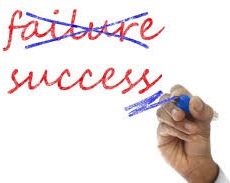Tired of the Daily Sales Grind…?
A proficiency gap seems to be widening among sales teams—where new business opportunities are increasingly more difficult to come by, and far too many sellers have become complacent (if not lazy) in their commitment to hone their craft.
Today’s selling environment is more difficult. That’s inarguable, especially given the volume of vendor solicitations prospective buyers have to fend off on a daily (if not hourly) basis.
“Customers don’t want to talk to vendors anymore,” is a recurring theme I often hear as I deliver QBS Methodology Training to sales teams all over the world, followed by the sentiment (from salespeople) that… “I would much rather communicate via email or text.”

I get it. Having raised two daughters in the electronics age, I’ve been on the receiving end of countless father-daughter text messages, some as long as my leg. My reply is always the same… ”Call me so we can discuss!” Seconds later, my cell phone rings and we work through whatever the latest drama, tragedy, or cause for celebration is—in a fraction of the time it would take to convey a series of cryptic texts back and forth.
Note that I’m not an old-school fuddy-duddy. In fact, quite the opposite. I believe that email, texting, and social media can all be valuable communication tools. But they DO NOT compensate for the real-time value of face-to-face (or voice-to-voice) interactions with customers.
Here’s a simple truth that will nevergo out of vogue. Every customer on your target list of accounts shares their needs, wants, goals, objectives, thoughts, feelings, and concerns with someone. The question is whether they’re open and willing to share that information with you.
Throughout the six books I’ve published on selling and effective communication skills, I consistently make the point that business relationships are personal, and people ultimately buy from people. While that may seem cliché, a communication gap is created when today’s electronic and social medial mentality impedes the ability to cultivate viable and lasting business relationships.
The fear of rejection has always been the enemy for salespeople who are responsible for reaching out to prospective buyers. And now that the average response rate when leaving voice-mail messages or sending mass email is less than 1%, it’s much less taxing on the human psyche to hide behind a keyboard than to actually put yourself out there and risk being rejected.
I get that, too! I was never good at dealing with rejection, even though multiple sales managers over the years tried to pound the idea into my head that rejection comes with the territory, so deal with it.
It may sound weird, but I’ve found that the best way to deal with rejection is to win more often. Closing an important sale, or wrapping up a significant deal is an aphrodisiac that is unmatched in other professions. While you can’t expect to win ‘em all, there’s no reason you shouldn’t expect to win more than your fair share of opportunities in today’s selling environment.
I would argue that the proliferation of electronic communication tools, social media, and digital marketing have created significant opportunities for go-getters in sales to take advantage of the proficiency gap that I described earlier—to engage more prospects in more productive sales conversations.
But, you cannot simply revert to what may have been ‘business as usual’ back in the day. To truly separate yourself from the rest of the ‘noise’ in the marketplace, you have to be more purposeful, relevant, credible, and valuable than ever. That brings us to the multi-million dollar question. In today’s selling environment, how (exactly) can I (or my sales team) sustain a competitive advantage?
It is absolutely possible to get a 50%+ call back rate when leaving voice-mail messages, or 70%+ when engaging new prospects with email. But, it’s not going to happen using traditional cold calling scripts, or by being complacent with the notion that sales is a numbers game…so make more calls!
For too long, the importance of strategy and technique has been overlooked in managing, coaching, and when training sales teams. Just look around any sales organization and you will see that some sellers are significantly more effective than others, even when they’re selling the same products and services to the same types of customers.
What’s the difference maker? Personality? Luck? While there may always be an element of being in the right place at the right time, the common thread that top performers share is an ongoing commitment to continually honing their craft and developing their selling skills.
Yes, the selling environment has evolved and will continue to change. But people still buy from people. In fact, I’ve the point in my pilgrimage as a sales trainer that when a budding salesperson tries to explain to me that customers no longer want to talk to salespeople, I simply laugh. If they’re not talking with you, then I can guarantee they’re talking with one of your competitors. Everyone is sharing with someone.
The real question is, what are you doing to be proactive in your approach so that potential buyers will “want to” share their goals and objectives with you?
Thomas A. Freese's Blog
- Thomas A. Freese's profile
- 2 followers



